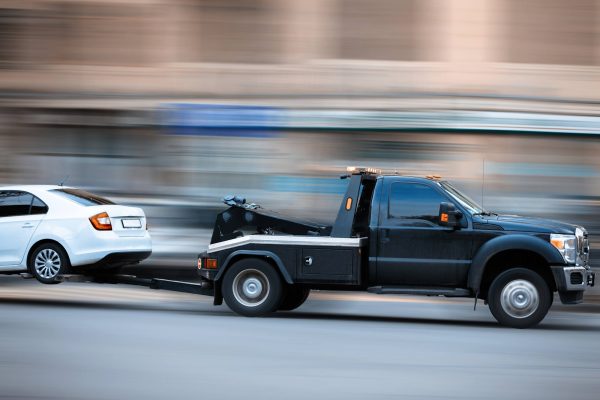The spectacle lift, known colloquially in the UK recovery industry as a ‘spec lift’, has revolutionised the way broken-down and damaged vehicles are recovered from Britain’s roads. This essential piece of recovery equipment has become a common sight on recovery trucks across the country, offering a versatile solution for vehicle transportation.
What is a Spec Lift?
A spec lift recovery truck features a specialised lifting mechanism that derives its name from its distinctive appearance: two wheel cradles that resemble a pair of spectacles. The system operates through hydraulic power, mounted on recovery vehicles, and enables operators to safely lift and transport disabled vehicles by their wheels rather than using traditional towing methods.
Recovery Equipment and Operation
The heart of any spec lift system is its hydraulic lifting mechanism, working in concert with adjustable wheel cradles that can accommodate different vehicle sizes. Critical to the safe operation are the spec lift straps, robust restraining devices that secure the casualty vehicle to the recovery truck. These straps form part of a comprehensive security system that ensures the safe transportation of vehicles.
Operators must pay particular attention to the condition of spec lift straps, checking them regularly for signs of wear, damage, or deterioration. The integrity of these straps is paramount to maintaining load security during transportation, and damaged straps should be replaced immediately rather than risking equipment failure.
Safe Operating Procedures
Safe operation of a spec lift requires careful attention to detail and adherence to established procedures. Recovery operators must first position their vehicle safely, taking into account ground conditions and potential hazards. The spec lift must be correctly aligned with the casualty vehicle’s wheels before lifting begins. Once the vehicle is lifted, operators must secure it using appropriate spec lift straps and additional restraints where necessary.
Throughout the recovery process, operators should continuously monitor the security of their load. Modern recovery trucks often feature camera systems to supplement mirror views, helping operators maintain visual contact with their load during transportation.

Legal Requirements and Speed Restrictions
UK regulations stipulate specific requirements for recovery vehicles using spec lifts. When transporting a casualty vehicle, speed restrictions apply: 40 mph on motorways and 30 mph on other roads. These limits help ensure the safety of both recovery operators and other road users. The regulations also permit the carriage of passengers in the casualty vehicle, provided the speed restrictions are observed.
Applications in Modern Recovery
Spec lift recovery trucks have proven invaluable in numerous scenarios. They excel in recovering vehicles with transmission problems where traditional towing might cause further damage. Their design makes them particularly effective in confined spaces such as multi-story car parks, where conventional recovery methods might be impractical. The speed and efficiency of spec lift systems also make them ideal for rapid recovery of broken-down vehicles from high-risk locations such as motorways and busy urban roads.

Looking After the Equipment
The reliability of spec lift equipment depends on regular maintenance and thorough inspection routines. Daily checks of hydraulic systems should be combined with periodic detailed inspections of all components, particularly the spec lift straps and securing equipment. Regular testing of safety mechanisms and warning devices ensures the system remains ready for service at all times.
Recovery operators across the UK rely on spec lift equipment daily to provide efficient and safe vehicle recovery services. By understanding and following proper operating procedures, maintaining their equipment diligently, and staying compliant with current regulations, they can continue to provide this essential service to motorists in need.
